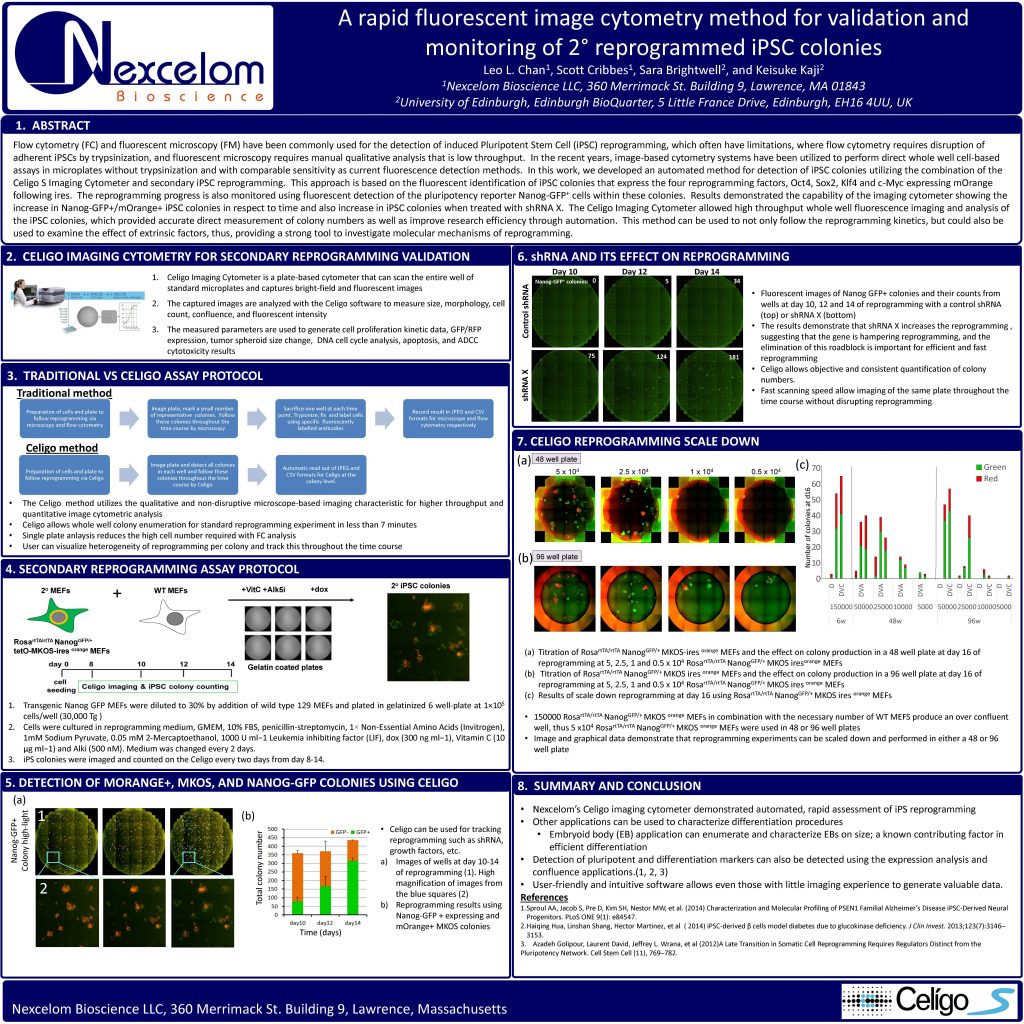A Rapid Fluorescent Image Cytometry Method for Validation and Monitoring of 2° reprogrammed iPSC Colonies
Leo L. Chan, Scott Cribbes, Sara Brightwell, and Keisuke Kaji
Flow cytometry (FC) and fluorescent microscopy (FM) have been commonly used for the detection of induced Pluripotent Stem Cell (iPSC) reprogramming, which often have limitations, where flow cytometry requires disruption of adherent iPSCs by trypsinization, and fluorescent microscopy requires manual qualitative analysis that is low throughput. In the recent years, image-based cytometry systems have been utilized to perform direct whole well cell-based assays in microplates without trypsinization and with comparable sensitivity as current fluorescence detection methods. In this work, we developed an automated method for detection of iPSC colonies utilizing the combination of the Celigo S Imaging Cytometer and secondary iPSC reprogramming. This approach is based on the fluorescent identification of iPSC colonies that express the four reprogramming factors, Oct4, Sox2, Klf4 and c-Myc expressing mOrange following ires. The reprogramming progress is also monitored using fluorescent detection of the pluripotency reporter Nanog-GFP cells within these colonies. Results demonstrated the capability of the imaging cytometer showing the increase in Nanog-GFP+/mOrange+ iPSC colonies in respect to time and also increase in iPSC colonies when treated with shRNA X. The Celigo Imaging Cytometer allowed high throughput whole well fluorescence imaging and analysis of
the iPSC colonies, which provided accurate direct measurement of colony numbers as well as improve research efficiency through automation. This method can be used to not only follow the reprogramming kinetics, but could also be used to examine the effect of extrinsic factors, thus, providing a strong tool to investigate molecular mechanisms of reprogramming.

